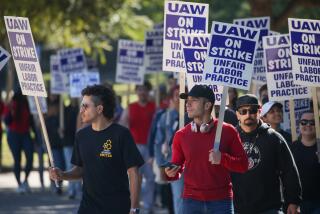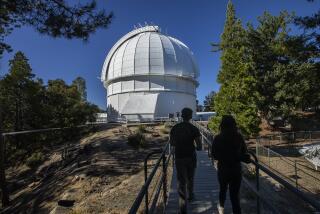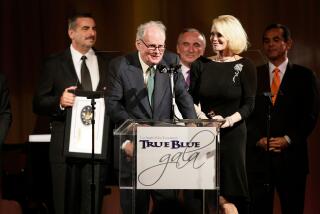Robert P. Kraft dies at 87; astronomer and UC Observatories director
Robert P. Kraft, an astronomer who helped illuminate some of the mysteries of the universe and secure the University of California’s prominence in the field of astronomy through his guidance of major observatories, has died at a Santa Cruz hospital. He was 87.
His death was announced Thursday by UC Santa Cruz, where he taught astronomy and astrophysics for more than 25 years. The cause was not given.
Kraft was the former director of Lick Observatory on Mt. Hamilton near San Jose and oversaw UC’s role in the development of the state-of-the-art W.M. Keck Observatory in Hawaii.
He also drove efforts in the late 1980s to create University of California Observatories, a multi-campus partnership that supports astronomical research, manages the Lick Observatory and oversees the Keck with Caltech and NASA.
“Bob Kraft was a major player in a great era for astronomy,” said Joseph Miller, an emeritus professor of astronomy and astrophysics at UC Santa Cruz who succeeded Kraft as director of UC Observatories.
Creating an organization to marshal the resources of the massive UC system for astronomy research was an ambitious undertaking because of campus rivalries, but Kraft “convinced them this was for all their benefits and that all boats would be raised,” Miller said. “That was transformative.”
Kraft was named director of Lick Observatory in 1981 and became the head of UC Observatories in 1988.
He also led major national and international organizations, serving as president of the American Astronomical Society from 1974 to 1976 and the International Astronomical Union from 1997 to 2000.
As a scholar he was known for groundbreaking research on novae, stars that greatly increase in brightness because of massive explosions. Working with two other scientists, he also conducted important studies on a category of stars called cepheid variables that led to significant refinements in the methods astronomers use to measure distances in space.
Robert Paul Kraft was born in Seattle on June 16, 1927, the only child of Victor Paul Kraft, an auto mechanic, and Viola Eunice Ellis. His upbringing was “unchurched,” he wrote in a autobiographical essay for the Annual Review of Astronomy and Astrophysics in 2009, which allowed him the freedom to think freely about matters such as the origins of the universe.
As a child, he was pushed toward the arts rather than science: His mother, who was enamored of child star Shirley Temple, started him on music and acting lessons in grade school.
By the time he entered the University of Washington in 1944, he intended to study education and become a teacher but wound up majoring in math.
His introduction to astronomy came in his freshman year, when he signed up for a class that happened to be taught by one of his math professors. He went on to earn a doctorate in astronomy at UC Berkeley in 1955.
“The idea that, in astronomy, one can build a model and then test out the idea in the world of observation was an intoxicating notion,” he wrote, “and I knew, with the fervor that only a young person can summon, that this was the life for me.”
He was an assistant professor at Indiana University and the University of Chicago and worked at the Hale Observatory in Pasadena before joining the UC Santa Cruz faculty in 1967.
He became a professor emeritus in 1992 but continued to conduct research, most recently on the age of the stars in the dense groupings called globular clusters. Although it remains an unsolved problem, Kraft found varying chemical compositions that could suggest the stars were not all born at the same time.
“Right to the end,” Miller said, “he was at the very forefront of research.”
Kraft was married for nearly 60 years to Rosalie Ann Kraft, who died in 2009. His survivors include two sons, Kenneth and Kevin, and a grandson.
Twitter: @ewooLATimes
More to Read
Start your day right
Sign up for Essential California for the L.A. Times biggest news, features and recommendations in your inbox six days a week.
You may occasionally receive promotional content from the Los Angeles Times.







